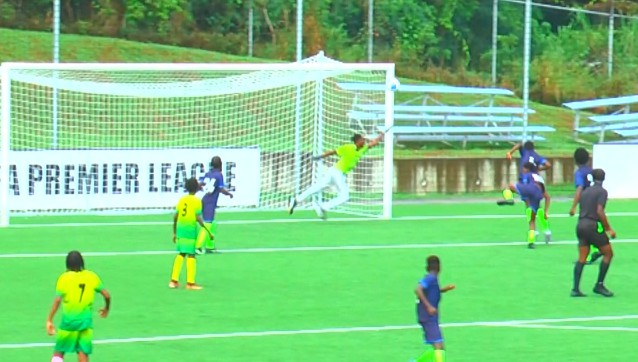West Indies Pace Attack Triggers Australian Collapse, Followed By Measured Response.
The opening day of the final Test between the West Indies and Australia at Sabina Park, Kingston, unfolded under the unique pink glow of floodlights, witnessing a dramatic swing in fortunes. The West Indies’ pace attack orchestrated a stunning collapse of the Australian batting line-up, dismissing them for a modest 225 after they had looked comfortably placed at 129 for two. The hosts, however, faced their own challenges with injuries forcing a reshuffle of their batting order and a nervy end to the day saw them at 16 for one, highlighting the precarious nature of the Test match. The day belonged to the West Indian bowlers, whose disciplined and aggressive bowling exploited the conditions to their advantage.
The Australian innings began cautiously, with debutant Sam Konstas and Usman Khawaja negotiating a testing new ball and a slow outfield. Their partnership, the longest opening stand of the series, blunted the initial threat posed by the West Indies’ seamers. However, the introduction of spin saw the breakthrough, with Greaves trapping Konstas lbw. Khawaja, after a resilient innings, fell prey to a brilliant catch by Shai Hope off Joseph, just as he looked set to build a substantial score. The arrival of Steven Smith injected momentum into the innings, but his aggressive approach proved to be his undoing. After surviving a dropped catch and an edged chance, he was eventually dismissed for 48, caught by King off Joseph. This dismissal triggered a dramatic collapse, with the Australian middle and lower order crumbling under the pressure exerted by the West Indian bowlers.
The West Indies’ pace trio of Shamar Joseph, Jayden Seales, and Justin Greaves were instrumental in dismantling the Australian batting line-up. Joseph, the pick of the bowlers, finished with figures of 4 for 33, taking his series tally to an impressive 17 wickets. Seales and Greaves provided excellent support, each claiming three wickets, as the Australian innings unravelled spectacularly. The turning point came shortly before dinner when Seales produced a beautiful delivery to dismiss Cameron Green, who had looked well-set on 46. From that point onwards, the Australians lost wickets at regular intervals, failing to build any meaningful partnerships. The late order aggression from Carey and Cummins provided some entertainment but ultimately failed to significantly alter the course of the innings.
The West Indies’ reply began under immense pressure, with debutant Kevlon Anderson, thrust into the opening role due to injuries to regular openers Mikyle Louis and John Campbell, falling cheaply to Mitchell Starc, who was playing his 100th Test. The experienced Starc struck late in the day to provide Australia with a much-needed boost, leaving the West Indies precariously placed at 16 for one at stumps. The remaining overs saw Brandon King and captain Roston Chase navigate a testing period under lights, surviving some challenging deliveries to see their team through to the close of play. Their resilience will be crucial in the coming days as the West Indies look to build a substantial first innings total.
The injuries suffered by the West Indies added another layer of complexity to the unfolding drama. The loss of both Louis and Campbell before the start of the innings forced a reshuffle at the top of the order, exposing the inexperienced Anderson to the new ball under challenging conditions. The injury to Alzarri Joseph during the Australian innings further depleted the West Indies’ resources, although substitute fielder Anderson Phillip made an immediate impact with a stunning diving catch to dismiss Travis Head. These injuries highlighted the physical demands of Test cricket and added to the uncertainty surrounding the match.
The first day’s play set the stage for an intriguing contest, with the West Indies holding the upper hand after their bowlers’ impressive display. However, the fragility of their batting line-up, compounded by injuries, makes their task of building a substantial lead challenging. The Australians, despite their batting collapse, will be hoping for a strong showing from their bowlers on Day 2 to restrict the West Indies and give themselves a fighting chance in the match. The pink ball, which played a significant role in the dramatic swings in fortune on Day 1, is likely to continue to be a factor, adding another dimension to the already captivating contest. The remaining days promise an enthralling battle between bat and ball, with both teams vying for supremacy in this decisive final Test.
Share this content:












Post Comment